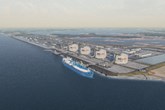Queensland to be ‘major player in global LNG market’
Recent official figures from the Australian Bureau of Statistics (ABS) reflect the move by Queensland’s minerals and energy sector from construction to operations.
The data shows that Australia’s economy grew by 0.5% in the December quarter and by 2.5% in 2014, however the Queensland economy contracted by 1% in the quarter or 2.5% in the year to December 2014.
Queensland’s contribution
Michael Roche, Queensland Resources Council (QRC) CEO, explained that although the December figures showed sluggish growth across the country, the results next quarter would tell a different story.
Roche said: “The figures for demand in Queensland clearly reflect the reduction in private investment, which fell 3.5% in the December 2014 quarter.
“These figures are not unexpected as we move from investment to exports and the ABS March quarter accounts will reflect the first quarter of LNG exports out of Queensland.
Major LNG player
“Queensland will be a major player in the global LNG market, set to produce 25 million tonnes a year of LNG by the end of 2016.”
Roche added that other parts of the Queensland resources sector are also making a major contribution, including record volumes of coal exports in 2014.
“As the industry moves out of the investment phase into production stage, we should not forget that resources is still responsible for supporting one in every five Queensland jobs and underpinning one in every four dollars of the State’s economy,” Roche concluded.
Adapted from press release by Katie Woodward
Read the article online at: https://www.lngindustry.com/liquid-natural-gas/06032015/qrc-queensland-to-be-major-lng-player-377/
You might also like
Wood wins maintenance contract for Rio Grande LNG facility
John Wood Group PLC has secured a 10-year contract with NextDecade to deliver maintenance solutions at Rio Grande LNG in the US.


